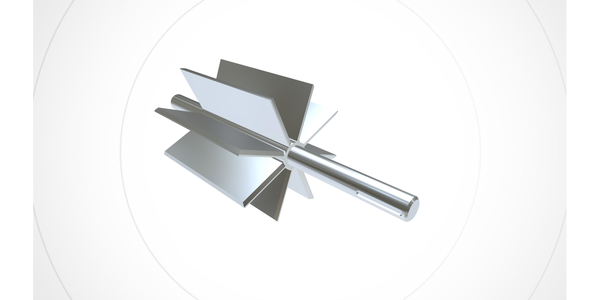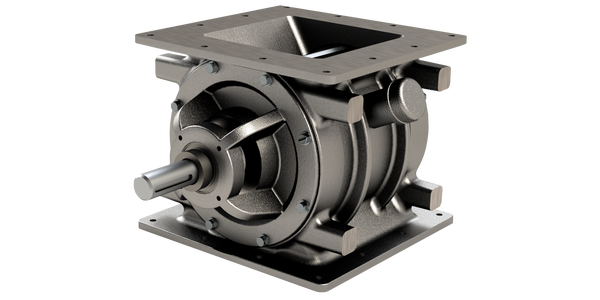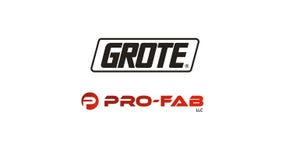Your choice of coating has a huge impact on the performance of your rotary valve and affects how often you maintain, repair, and replace it.

Megan Thompson, president and COO, ACS Valves
In manufacturing, there is no better workhorse than the reliable rotary valve. Rotary valves regulate the flow of material and keep the conveying process moving efficiently.
To ensure valves are working at peak capacity and NFPA compliance, there are a few things to consider. Keeping a meticulous maintenance log, carefully monitoring flow rates, and investing in rotor pocket purges can help keep things running, but one of the most important choices is the material and coating for rotary valves, housing, and endplates.
Every material is different, and every valve must be designed or equipped specifically for its application, whether it’s food-grade powders, plastic pellets, fly ash or cement. This makes the choice of rotary valve coating a vital one.
Many particles that pass through rotary valves are sticky, abrasive, or corrosive. Those particles can abrade the rotor’s surface and housing. When rotor-to-housing clearances increase due to abrasion, air leakage may occur, which means more dust is released into the plant environment, increasing the risk of fire or explosion due to combustible dust.
Investing in the proper coating will help the valve’s performance and longevity while minimizing leakage, which will in turn prevent combustible dust deflagrations and keep your manufacturing plant NFPA-compliant.

Why Coatings Matter
If particle build-up isn’t effectively mitigated, it can cause quality issues and contamination. Corrosion and abrasion can create a sandblast effect that wears down your rotor-to-housing tolerances, which can lead to material leakage, efficiency reduction, and possible compliance loss. Sticky, corrosive, and abrasive materials cause additional wear. Coatings should be applied to the valve’s rotors, housing and endplates, allowing materials to slide off the surface easily.
A coating of hard chrome, tungsten, Teflon, or Lectrofluor will improve material release while preventing material buildup, minimizing downtime and maintenance, improving cleanability, preventing capacity reduction, reducing the need for rotor replacements, and in some cases tripling the lifespan of your valve.
Some specialty coatings can minimize both sticking and abrasion, while resisting temperatures up to 550°F.
The best choice of coating for a particular manufacturing process will always depend on the equipment, material, and application. Ask a rotary valve specialist what they recommend.
Different Materials Require Different Coatings
To help you make the right decision, here is a quick breakdown of the best coating choices based on material type.
Materials that are light and not particularly sticky (such as powdered sugar)
Materials at the lightest weight and abrasion level don’t stick much. This means a hard chrome coating on the housing and endplates will do the trick. This provides the best possible sticking and abrasion resistance.
Materials that are light but sticky (such as flour and granulated sugar)
What sets these materials apart from something like powdered sugar is a combination of weight and moisture-retention, both of which contribute to build up. With stickier materials, even the slightest trace of moisture can cause these particles to harden and create material build up that ultimately leads to a reduced flow rate and reduced efficiencies on the line.
At this stage, you should be investing in a 304 stainless steel valve polished to 150 grit or a new cast iron coating called XTR-Coat. This will help bulkier, stickier materials slide off the rotor and housing, so they don’t build up in the rotor pockets.
XTR-Coat is a reliable, food-grade alternative to stainless steel coatings that also maintains compliance with FDA [1][2], USDA, and NFPA standards.
Materials that are moderately abrasive (such as cement)
Moderately abrasive materials like cement will require a heavy plate chrome, which is similar to a hard chrome, only thicker. With a heavy plate chrome coating on the housing and endplates, you’ll still want to be working with a stainless-steel rotor, which can easily be replaced as it wears down. This will be cost-effective as you won’t have to replace the entire valve.
Materials that are corrosive (such as salt)
With corrosive materials, the choice of coating can be the difference between safe operation and disaster. If not coated properly, rotor wear and housing gaps can increase at an alarming rate.
At this stage, an XTR-Coat becomes a necessity, as its durability works in tandem with a stainless-steel rotor, allowing the valve to convey any food particle safely and compliantly.
Materials that are highly abrasive (such as silica sand)
When conveying the most rugged materials, a Tungsten coating is a sound investment. Trusted in nearly every industry from medical to military, Tungsten is a metal alloy known for its durability and high melting point. Tungsten is a triple threat, and when this coating is applied to the housing, endplates and rotor, the entire valve will be protected against even the most abrasive materials.
Choose the Right Coating Provider
Whether you work with materials in the construction, chemical, food, pet food, plastics, or pharmaceutical industries, without the right valve coatings, you risk a reduction in material and efficiency, as well as a potential safety risk. The right coating from a reliable valve manufacturer will ensure that your line is protected against contamination and dust deflagration while also prolonging the lifespan of your entire valve.
We recommend partnering with a valve manufacturer that takes the time to educate its clients by recommending safety features, explaining protocols, and best practices.
Your choice of coating has a huge impact on the performance of your rotary valve and affects how often you maintain, repair, and replace it. In other words, the right coating saves you time and money. So, protect your rotary airlock valve and extend its lifespan with the right valve coating. You’ll be glad you did.
Megan Thompson is president and COO, ACS Valves, Caledonia, ON, Canada. For more information, call 905-765-2004 or visit www.acsvalves.com.
[1] https://www.accessdata.fda.gov/scripts/cdrh/cfdocs/cfcfr/CFRSearch.cfm?fr=175.300
[2] https://www.accessdata.fda.gov/scripts/cdrh/cfdocs/cfcfr/CFRSearch.cfm?fr=177.1550
About the Author(s)
You May Also Like




